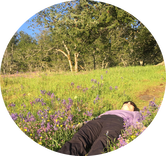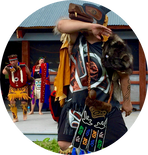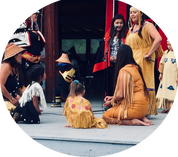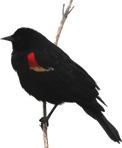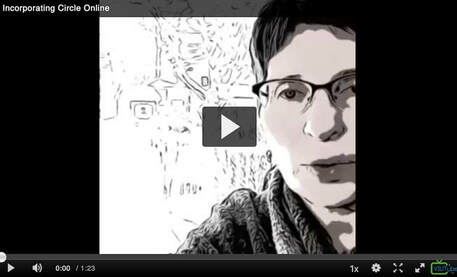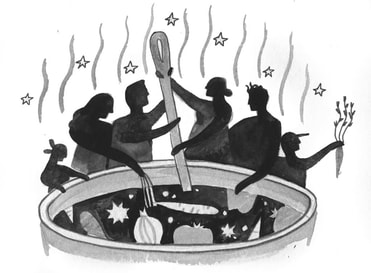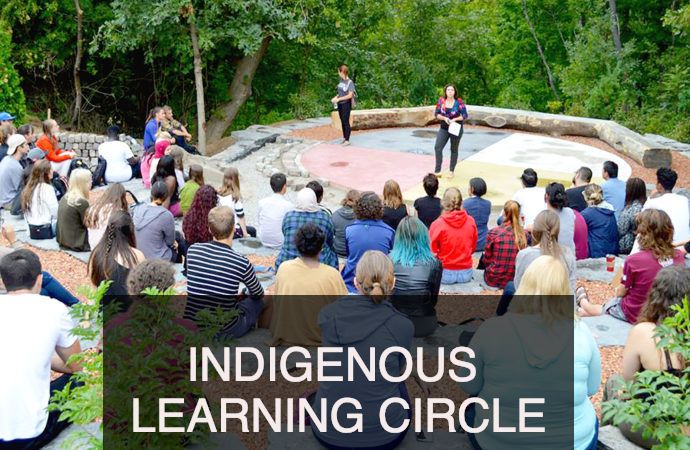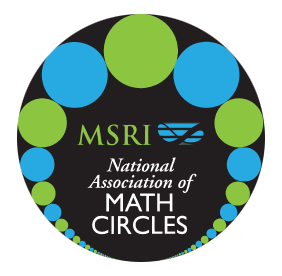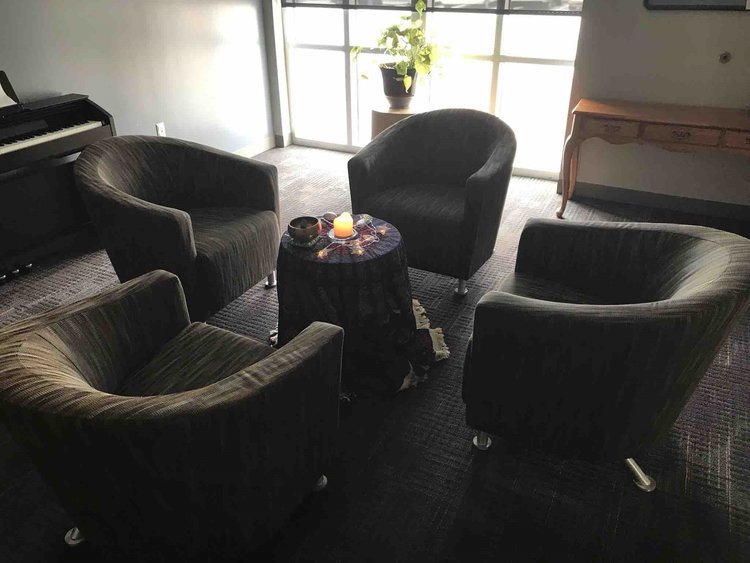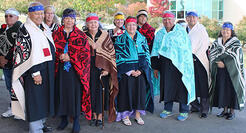The beauty of CIRCLE
The circle...is a human cultural expression of nature, of the natural and supernatural experience: the universe.
We have been so far removed from our Indigenous foundations that we have forgotten that this foundational platform exists...
We need to go back there to examine it.
Lewis Cardinal, What is an Indigenous Perspective?
What happens in Circle?
DADIRRI: the art of deep listenning
DADIRRI |
|
|
|
STORY: From impatience to attention |
Talking circles
Talking circles were traditionally used - and continue to be - in Indigenous sacred ceremony. They provide a structure where the voice of each person present is given equal weight.
Each voice is acknowledged and heard in turn. Each voice is “Culturally located,” and participants learn “To Listen Respectfully to/ Others” through repeated practice, explicit modelling, and clear intent.
Quotes from F. J. Graveline, Circle as methodology: Enacting an Aboriginal paradigm
Each voice is acknowledged and heard in turn. Each voice is “Culturally located,” and participants learn “To Listen Respectfully to/ Others” through repeated practice, explicit modelling, and clear intent.
Quotes from F. J. Graveline, Circle as methodology: Enacting an Aboriginal paradigm
Unlike other systems of communication, talking circles are not intended to create competition as in the western tradition.
An integrative conversation is a genuine exchange of ideas, feelings, perspectives, opinions, and so forth, where for each person involved there emerges a sense of self as part of the whole...
Individuals turn from concerns on the personal level, to collective concerns: away from competition to individuals contributing as a part of a larger community.
This shift from competitive to inclusive is the cross cultural move"
Shauneen Pete. The circle as Pedagogy; Creating Authentic Elder/Youth Engagement
Dancing circles
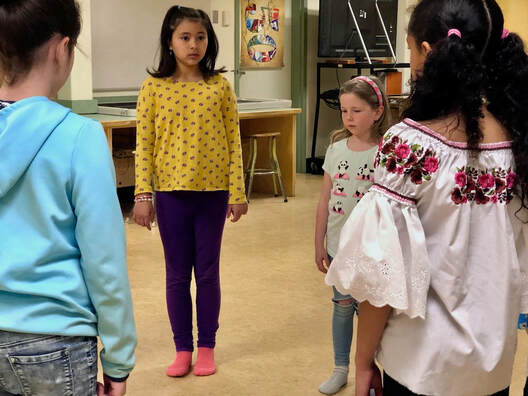
Grade 1 teacher Jan Carnahan brings circle dancing to school children ages 7 - 10. Some of them have been dancing with her for 4 years. You'll see and hear the children's experiences of being together with intention in a circle of community. Dances are either traditional from European villages or more modern choreographs based on traditional steps.
Stay tuned for some amazing video footage!
Stay tuned for some amazing video footage!
|
Anne explores how Circle is, in some ways, already built into online environments. In other ways, extra effort must be made to help community connect. Circe, leadership and shared knowledge can be enhanced in Circle.
|
Anne experimented with moving the tables in her class into a circle - or a U-shape. It had an immediate impact on the class dynamics.
|
The strength of CIRCLE
Circular Leadership
"In the reciprocal model, this role can rotate between members, depending on the needs of the group.
Unlike the way we normally think of leadership... reciprocal leadership is about engaging everyone to find the way forward. It is spherical in nature, rather than hierarchical.
In this way of seeing things, a great leader is an expression of their collective, not its star. If done well a leader should oversee, guide, and represent the collective vision.
At times, we may need a confident and outspoken leader to power us through a tangled passage, but other times we need the leader who quietly sees the network of connections within the whole.
Sometimes we need a leader who hangs back so another may practice at stepping forward, challenging us to been better than we think possible.
Reciprocal leadership ultimately recognizes the circle itself as the teacher."
Toko-pa Turner, Circular Leadership
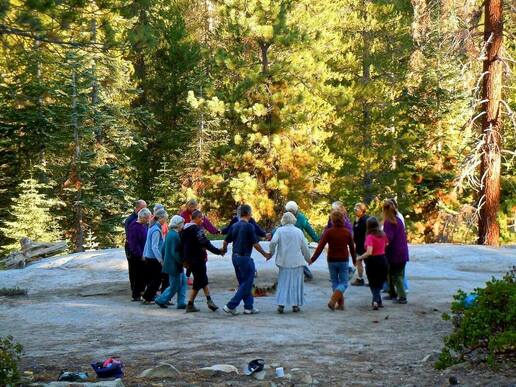
The Energy of Circles
"Circles...invoke and celebrate the greater circles - the cycle of the seasons, the cycle of life and the wheel of death and rebirth.
In a circle all are equal, no one is more important or in front of anyone; there is an intimacy in a circle; circles are about connecting and relating...
Whenever you are in the circle, you can see everyone else and you are always in direct communication with the centre, with the Source.
A line moves directly forward, focused on a goal, so a leader is implicit...There is no face-to-face connection, and the view ahead is someone else's back.
We need line energy - it can get us somewhere, but it also needs to be exposed to circle energy to keep the journey oriented to the centre.
When a circle is danced [or activated by the participation of each person in the circle] ...the energy begins to spiral.
Though the circle is physically limited to the spot where it dances, its effect is far-reaching: the energy of the circle radiates out - like a stone dropped into water sending ripples out as far as the eye can see."
June Watts, Circle Dancing: Celebrating the Sacred in Dance
"Circles...invoke and celebrate the greater circles - the cycle of the seasons, the cycle of life and the wheel of death and rebirth.
In a circle all are equal, no one is more important or in front of anyone; there is an intimacy in a circle; circles are about connecting and relating...
Whenever you are in the circle, you can see everyone else and you are always in direct communication with the centre, with the Source.
A line moves directly forward, focused on a goal, so a leader is implicit...There is no face-to-face connection, and the view ahead is someone else's back.
We need line energy - it can get us somewhere, but it also needs to be exposed to circle energy to keep the journey oriented to the centre.
When a circle is danced [or activated by the participation of each person in the circle] ...the energy begins to spiral.
Though the circle is physically limited to the spot where it dances, its effect is far-reaching: the energy of the circle radiates out - like a stone dropped into water sending ripples out as far as the eye can see."
June Watts, Circle Dancing: Celebrating the Sacred in Dance
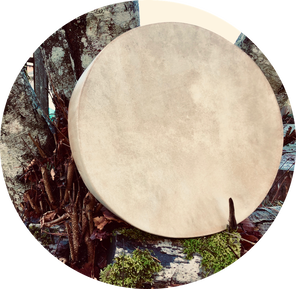
Circle - Drum - Heartbeat
"Today, that’s why we use the drum in the morning. We hear it an’ get reminded of how we felt hearin’ it in the darkness when we were little.
Reminds us too that we gotta stay joined up with Mother Earth an’ that we can feel all safe an’ protected that way too.
Reminds us to stop an’ listen for the heartbeat goin’ on all around us even now. That’s why we use it. Not for our ears, for our insides. Us we gotta learn to live from the inside out."
Richard Wagamese, Keeper 'n Me
"Today, that’s why we use the drum in the morning. We hear it an’ get reminded of how we felt hearin’ it in the darkness when we were little.
Reminds us too that we gotta stay joined up with Mother Earth an’ that we can feel all safe an’ protected that way too.
Reminds us to stop an’ listen for the heartbeat goin’ on all around us even now. That’s why we use it. Not for our ears, for our insides. Us we gotta learn to live from the inside out."
Richard Wagamese, Keeper 'n Me
The Circle of Life - Bringing community together
|
|
"How can one video be so deeply moving?
It's monumental. These students, community members and dancers show how to witness devastation with eyes and hearts open. We all come out stronger in the process. It's worth the 20 minutes. And go to full screen!" - Anne Hilker, educator London university students and community members, representing many nationalities, joined hands in solidarity, harmony and dignity to commemorate all victims of atrocities around the world, on the occasion of the centenary of the Armenian Genocide. Artist and choreographer Shakeh Tchilingirian led "The Circle of Life" circle dance at the School of Oriental and African Studies, University of London, UK. "We wanted to emphasize the essential human and moral dimensions of the societal rupture that a genocide causes and the process of reconciliation through living culture." - Hratch Tchilingirian, producer |
CIRCLE INSPIRATION for instructors & learners
FOLLOW THE IMAGES!
|
NEWEST ADDITIONS:
|
|
image credits
|
circular leadership: Molly Costello
dancing the rhythms of the earth - Sequoia National Forest USA drum: A Hilker elders: Vancouver Island University red-winged blackbird: Jon D. Anderson place: J Carnahan ancient stone circle: pixabay story: A Hilker mentorship: A Hilker all other images from pixabay or WEebly, no attribution required |
|
Except where otherwise noted, this work is licensed under a Creative Commons Attribution-NonCommercial 4.0 International License.
|
